Multi-User Editing
This topic outlines the workflows needed for configuring Multi-User editing within an Unreal Engine project. This includes the configuration of the UE project, and the setup of the Designer project.
If a Multi-User Server is configured and running, any additional machine on the same network as the render nodes will be able to run the project in Edit mode and make live changes. Any changes to the project made while there is an active workload will be reflected in real-time.
- Client-Server Live Collaboration
- Real-time Synchronization of Assets
- Lightweight Transaction-based Sync
- Compliments Source Control
- Not necessary to use Source control but is recommended
- Multiple platform Support During Collaboration
- Works over LAN or VPN
Prerequisites
Section titled “Prerequisites”- All clients must be using the same Engine build.
- All computers must be on the same LAN or VPN.
- All users must be working on matching project name.
- All users must start with exactly the same content - typically synced from source control.
Unreal Engine Workflow
Section titled “Unreal Engine Workflow”Configure Multi-User Editing in a UE project
Section titled “Configure Multi-User Editing in a UE project”- Ensure the Multi-user editing plugin is enabled in the UE project. Navigate to Edit > Project Settings > Plugins > Multi-User Editing.

- Ensure Enable Multi-User Toolbar Button, Auto Connect and Retry Auto Connect on Error are enabled.
- Set the Default Server URL to the name of the machine that will be running the Multi-User Server (e.g. “rxiii-xxxxx”).
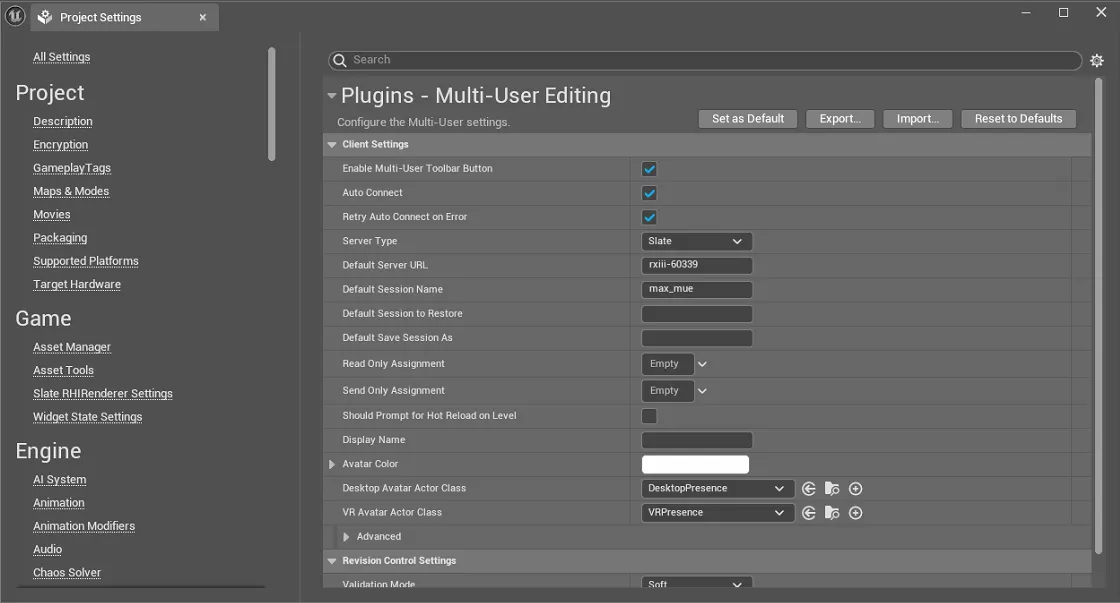
- Set Default Session Name to something unique (e.g. “MUE1”).
Configure UDP Messaging in UE
Section titled “Configure UDP Messaging in UE”- In Project Settings > Plugins > UDP Messaging, set the Unicast Endpoint to the network address that will used for the RenderStream pool Preferred Synchronisation Adaptor (preferably the Media network).
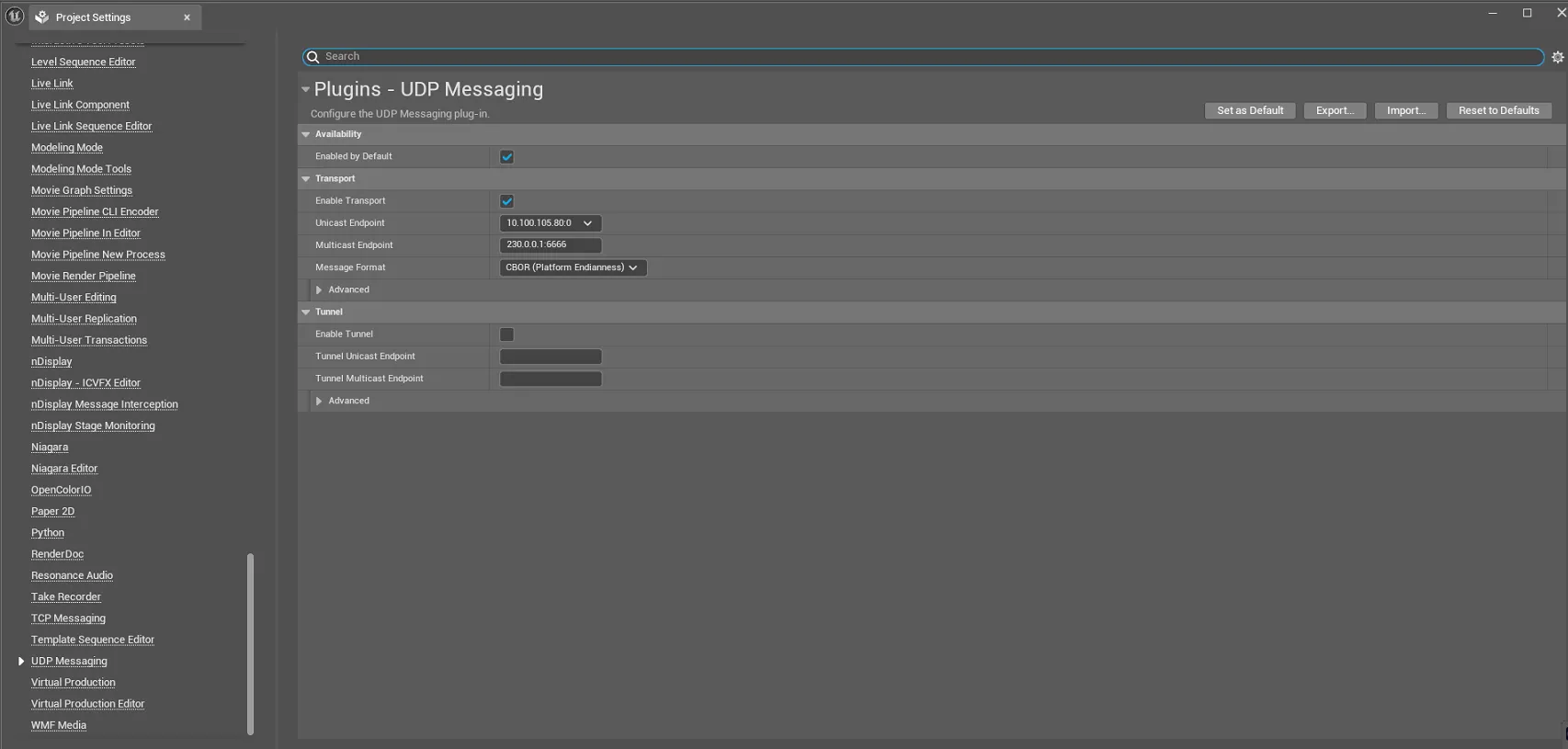
Designer Workflow
Section titled “Designer Workflow”Configure Engine Settings in Designer
Section titled “Configure Engine Settings in Designer”- Open the RenderStream layer editor and right-click on the Workload name.
- In the Cluster Workload editor, ensure a RS Asset is selected, then right-click on the Asset name.
- In the Asset editor, right-click on the Engine settings property,
UnrealEngineSettingsResource. - Check the box to Enable multi-user edit.
- In Multi-user session name, add the Default Session Name you previously created in UE (e.g. “MUE1”).
- In Multi-user session host, set the hostname to the name of the machine that will be running the Multi-User Server, the configured Default Server URL in UE. (e.g. “rxiii-xxxx”)
Launch a Multi-User session in Designer
Section titled “Launch a Multi-User session in Designer”- Ensure the Preferred Synchronisation Adaptor has been set on all the render nodes to the same network port set in the UDP Messaging setting in UE (the Media Network). To select the Preferred Synchronisation Adaptor, open the Cluster Pool and right-click the machine name to edit each render node. This automatically defaults to Any but needs updating for MUE.

- Sync the project to all render nodes.
- Launch the Multi-User Server on the machine specified as the Default Server URL either launched standalone
UnrealMultiUserServer.exeor through the Unreal Editor. - Start the workload. When the workload is running it will connect to the Multi-User Server.
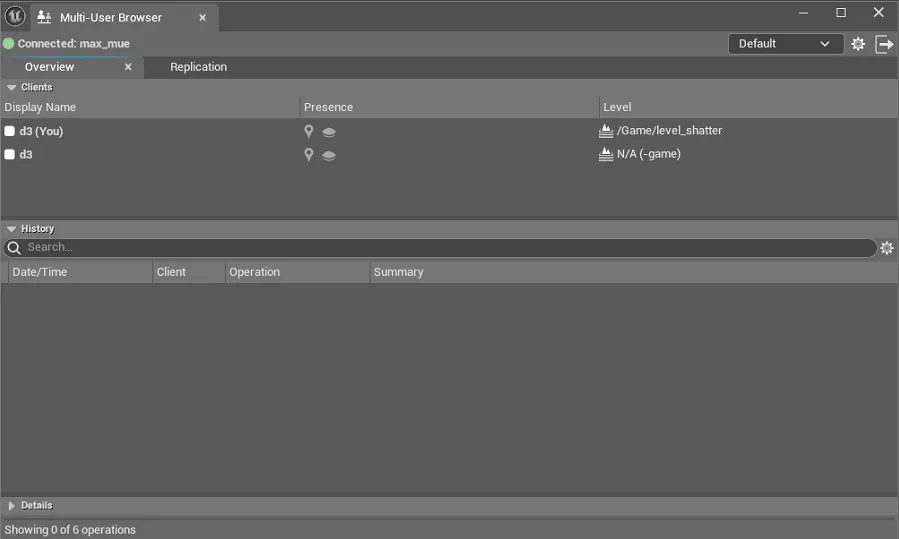
Joining a Multi-User Session
Section titled “Joining a Multi-User Session”Multi-User Browser
Section titled “Multi-User Browser”Once a Multi-User Server and Session have been launched on your network, joining is very simple.
- Open your project and navigate to Window > Developer Tools > Multi-User Browser. This will open the Multi-User Browser window.
-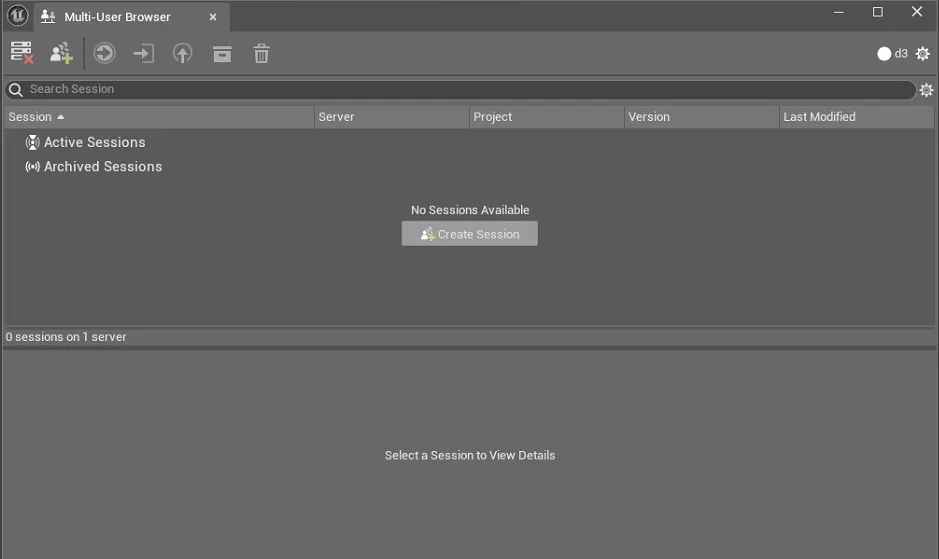 Multi-User Browser
Multi-User Browser
- If a Multi-User Server and Session have been launched, and you have correctly configured your UDP messaging settings, you will automatically see the available Sessions on your network. Double-click to join.
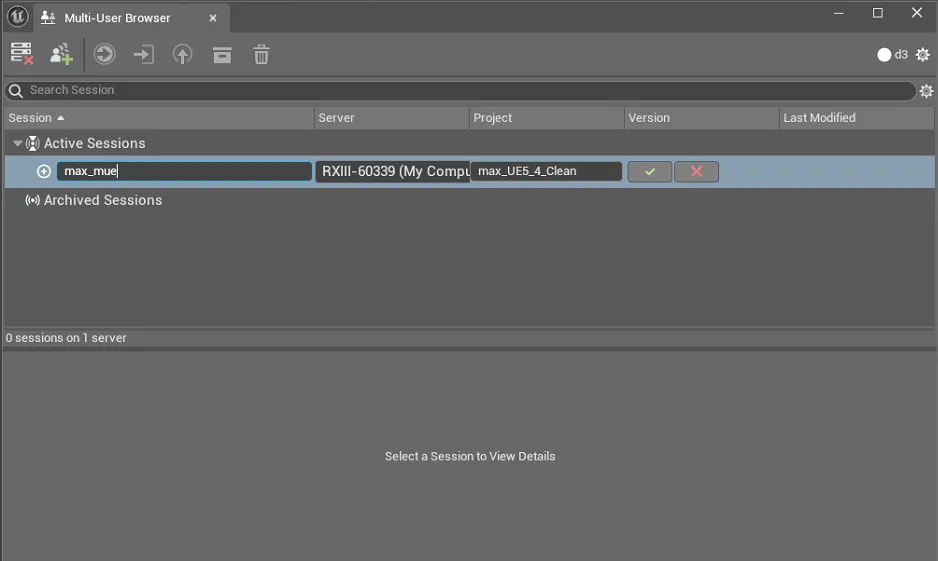 MUE Active sessions
MUE Active sessions
- All clients connected and in session are listed in the Multi-User Browser.
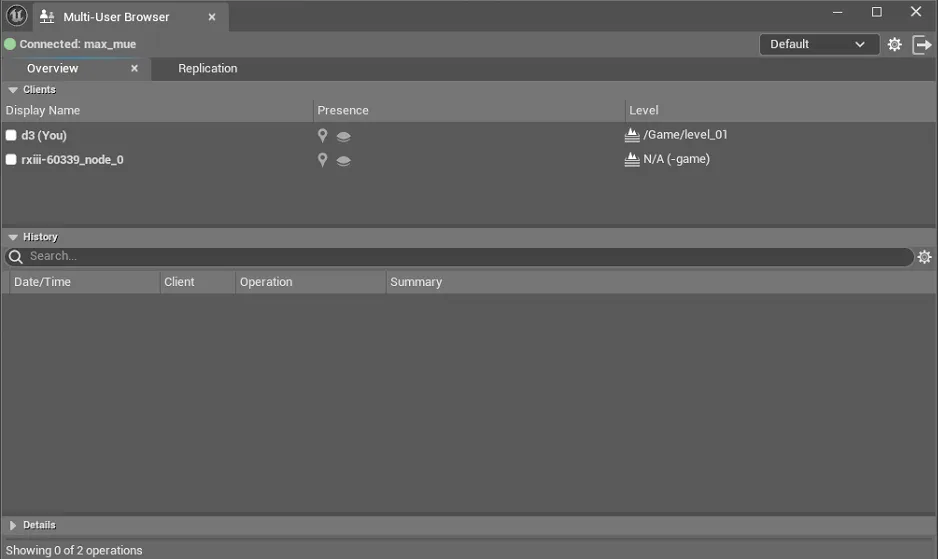 Connected clients in the MUE session
Connected clients in the MUE session
Saving changes in a session
Section titled “Saving changes in a session”Changes made in a Multi-user session are not persisted to the project file on the connected Render Server. If a Render Server leaves the session it will have it’s original content and not the changes from the Multi-user session.
You can persist the files while editing using the Revision Control button in the bottom right and clicking Persist Session Changes…

To persist the files once adjustments have been finalised, click the Leave the current session button, Yes on Do you want to persist the changes? and then Persist after reviewing the files to Persist from the session.
Then you can sync the project file to the Render Servers and rejoin the session.


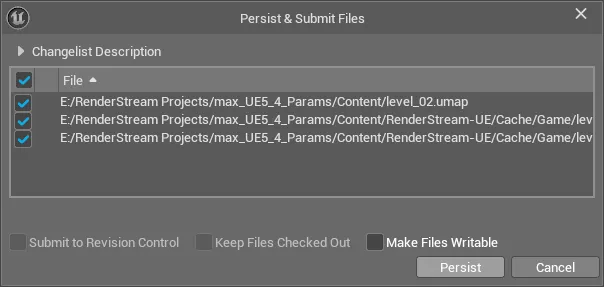
Additional information
Section titled “Additional information”-
Multi-User Editor will use the Preferred Synchronization Adaptor selected in the d3 project to send nDisplay communication messages, including MUE data. Therefore, all servers must be connected to a common network that can be designated as the Preferred Synchronisation Adaptor and must be able to communicate with each other via ping over this network.
-
The MUE plugin must be enabled in UE and the server must be launched within UE. We’ve provided instructions for launching the session through the UE editor. If you prefer to use a console command, please refer to the Unreal Engine documentation.
-
Adding Perforce can add a layer of complexity to troubleshooting issues, but does provide invaluable Source control.
-
When using Perforce, Source control must be enabled in the Editor and the content must be on the latest revision (ie. pull latest in Perforce).
-
It is very helpful to check out the Engine.ini file before making changes in Project Settings when using Perforce. You can find it under Root Project Folder > Saved > Config>WindowsEditor.
-
-
When making large amounts of changes, make sure that you save and persist often. While persisting, it is helpful to un-toggle anything being persisted to the “UE-Renderstream-Cache” folder.
To learn more about Multi-User Editing (MUE) from Epic’s official documentation: https://dev.epicgames.com/documentation/en-us/unreal-engine/multi-user-editing-in-unreal-engine?application_version=5.4